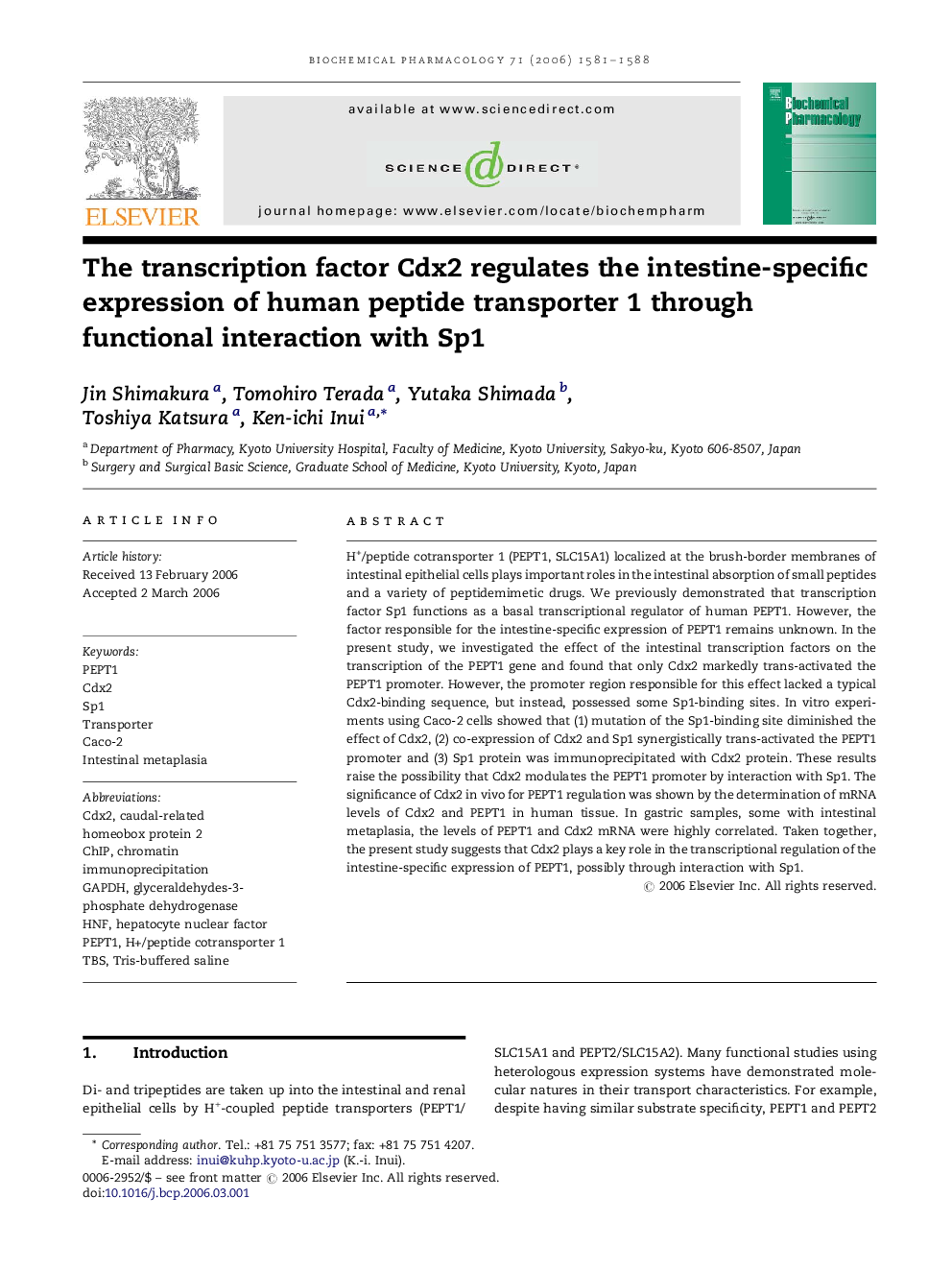| Article ID | Journal | Published Year | Pages | File Type |
|---|---|---|---|---|
| 2515559 | Biochemical Pharmacology | 2006 | 8 Pages |
H+/peptide cotransporter 1 (PEPT1, SLC15A1) localized at the brush-border membranes of intestinal epithelial cells plays important roles in the intestinal absorption of small peptides and a variety of peptidemimetic drugs. We previously demonstrated that transcription factor Sp1 functions as a basal transcriptional regulator of human PEPT1. However, the factor responsible for the intestine-specific expression of PEPT1 remains unknown. In the present study, we investigated the effect of the intestinal transcription factors on the transcription of the PEPT1 gene and found that only Cdx2 markedly trans-activated the PEPT1 promoter. However, the promoter region responsible for this effect lacked a typical Cdx2-binding sequence, but instead, possessed some Sp1-binding sites. In vitro experiments using Caco-2 cells showed that (1) mutation of the Sp1-binding site diminished the effect of Cdx2, (2) co-expression of Cdx2 and Sp1 synergistically trans-activated the PEPT1 promoter and (3) Sp1 protein was immunoprecipitated with Cdx2 protein. These results raise the possibility that Cdx2 modulates the PEPT1 promoter by interaction with Sp1. The significance of Cdx2 in vivo for PEPT1 regulation was shown by the determination of mRNA levels of Cdx2 and PEPT1 in human tissue. In gastric samples, some with intestinal metaplasia, the levels of PEPT1 and Cdx2 mRNA were highly correlated. Taken together, the present study suggests that Cdx2 plays a key role in the transcriptional regulation of the intestine-specific expression of PEPT1, possibly through interaction with Sp1.
